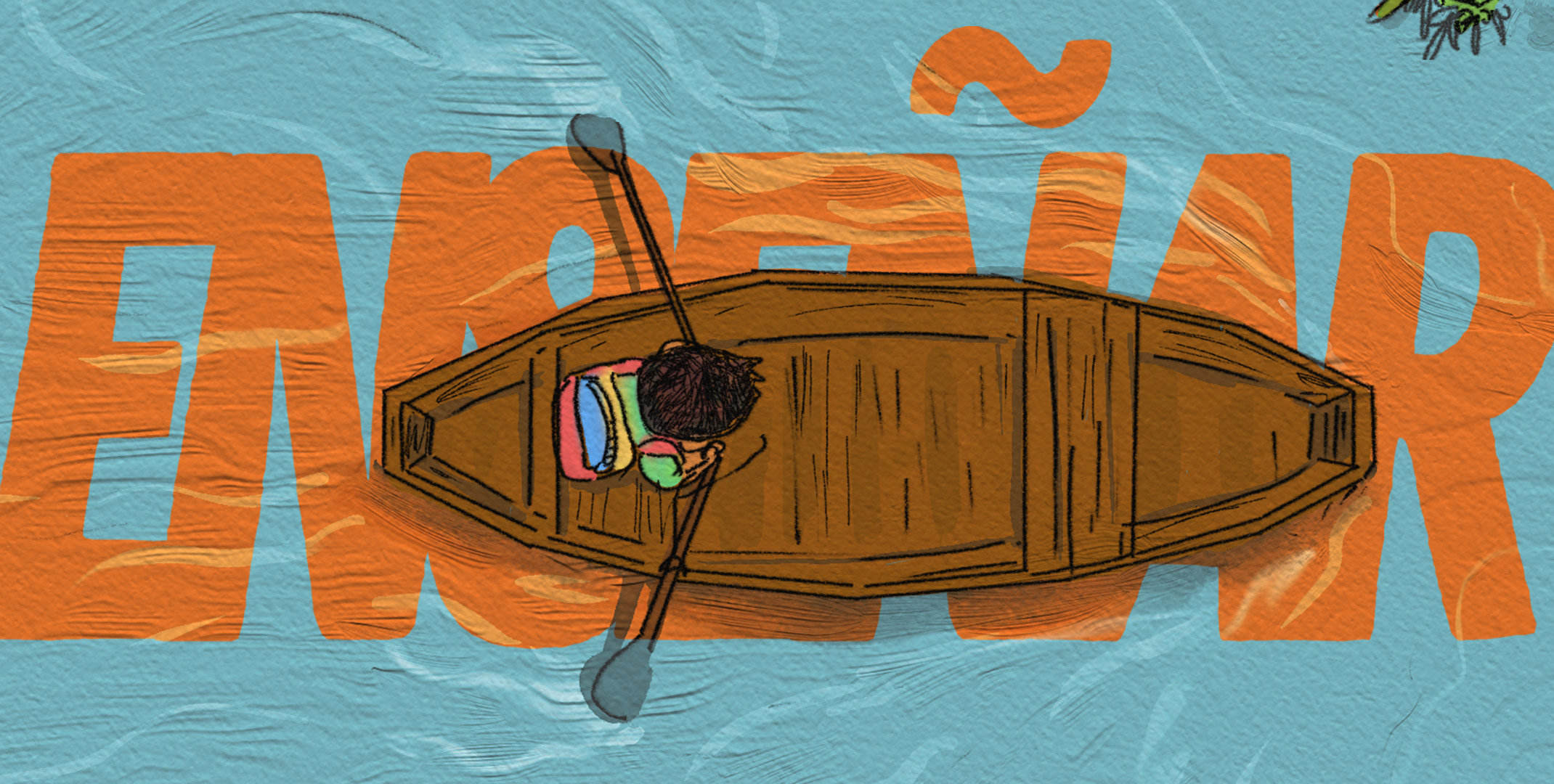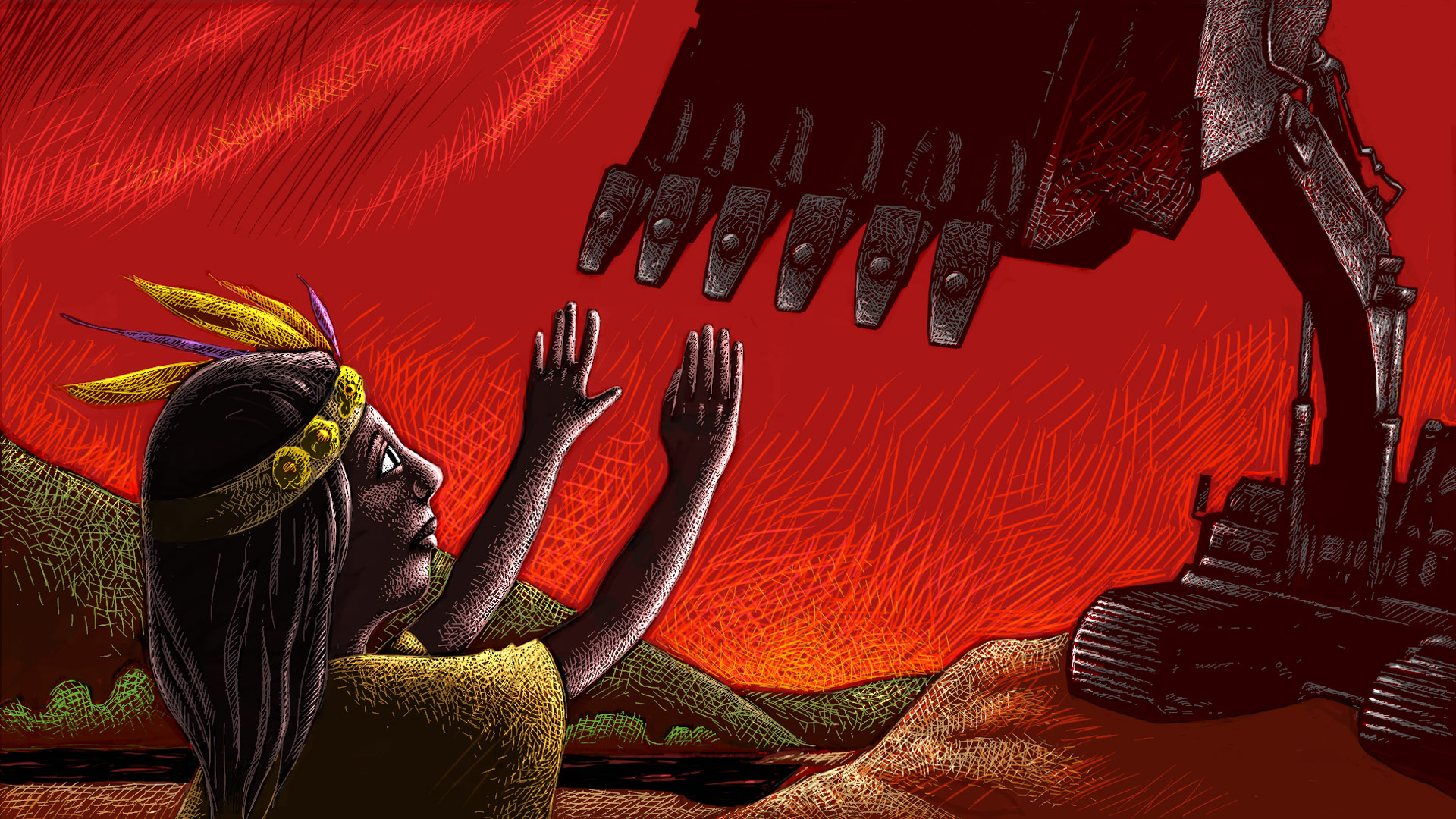Versión en español
We are family now
Nieves Azuaje Azavache has dedicated herself to teaching for decades. At the age of 62, she still works as a college professor. But what she is most passionate about is teaching the Baré Indigenous language to the children in her community.
Nieves Azuaje Azavache is a short sleeper. She usually goes to bed before midnight. More often than not, however, she stays up writing, reading, or preparing the material she will be teaching at Kawei Jmiye, which is Baré for Macaw Nest, a linguistic niche. She wakes up at 5:00 a.m. every day, or at 7:00 a.m., if she has stayed up late. One would say that teaching keeps her awake at night. Fortunately, Leonel, her husband, gets her and supports her in her passion.
Yes, Nieves is an educator at her core. She has been performing as one since she was 17. For a good 45 of her 62 years, she has been studying and teaching. She earned her undergraduate degree from the Universidad Pedagógica Experimental Libertador, her master’s and PhD degrees from the Universidad Nacional Experimental Rómulo Gallegos, and is currently pursuing a specialty in educational resources. Long retired as a teacher in the public sector, she still teaches at the Universidad Nacional Abierta.
But teaching the Baré language in the Kawei Jmiye linguistic niche is where she spends most of her time. Every day, from 3:30 p.m. to 6:30 p.m., children come to learn what she has to teach.
The idea of the linguistic niches came from a couple of anthropologists who arrived in the Venezuelan Amazon region in the 1970s and encouraged the local teachers to preserve the language of their Indigenous peoples. Omar González Ñáñez and Emilio Monzonyi, who were already in Río Negro promoting the revitalization of Indigenous languages, saw that the Baré language was spoken by only a few; thus, they decided to open a linguistic niche in San Carlos. That is the same niche where Nieves took Baré lessons from granny Laura Vida, although not for too long, because her father pulled her out of the course.
She was just a little girl, but the language of her ancestors had already caught her attention. When she lived and studied in Río Negro, some of her girlfriends could say a word or two in Baré; however, not a single word in Baré was spoken at home, despite the fact that her mother was a Baré Indigenous person herself.
“Mom didn’t speak it much,” —she recalls— “neither did my grandmother, but those from the previous generation did. My mom says that children were told to ‘get out of here and go learn Spanish so that you can talk to the white people.’”
Back then, Indigenous peoples were looked down upon and discriminated against. They were taken to plantations to extract rubber and cut wood. They were treated as if they were slaves. Naturally, some families avoided teaching their children their language for fear they would be identified as “Indigenous”.

The niche project in Río Negro would be short lived because it lacked the support from both the government and the Indigenous people. Nonetheless, that did not stop Nieves from wanting to learn about her ethnic origins and the language and culture of her own.
Time went by and the day came when she had to choose a topic for her master’s degree project. She decided to work on the social and cultural characteristics of the Baré Indigenous people. One of the findings of her research project was that the weakest dimension of the Baré was, precisely, their language.
Between 2008 and 2009, Nieves Azuaje exchanged ideas with anthropologist Omar González Ñáñez, who suggested that she open a linguistic niche. At first, she was not won over to the idea because of the challenges it involved. Regardless, after much thought, she decided she would. In 2010, Nieves inaugurated the Puchuchúkuli Jmiye [Silverbill Nest] linguistic niche, where she gave Baré classes and where Leidy, her daughter, who was studying preschool education, lent her a hand with student recreational activities.
They worked there for several months, until Leidy suggested that they continue teaching at her house in the San Enrique sector of Puerto Ayacucho. Nieves knew it was going to be difficult because they did not know of any Baré Indigenous children in the area, but they stayed their course. On February 12, 2011, they opened the Kawei Jmiye [Macaw Nest] linguistic niche.
At first, there was little motivation from the children or their parents.
“Leidy would stay home to tend to the kids who arrived in early, and I would drive my car and pick up those who lived in other areas. After class, we had to take them back home. We even bought them snacks.”
Even so, they were barely able to get ten students to come. With time, though, people from the Ministry of Education realized that Indigenous peoples needed to have access to education, and that Indigenous languages needed to be saved from extinction. The ministry’s Indigenous Education Division hired the teachers and wisdom bearers working at the various niches and appointed them to positions as ‘teachers without a degree’. Their salary is almost symbolic, but at least they are earning some money, which was not the case before, and they use part of that money to buy school supplies for the children. And UNICEF and a NGO have donated supplies to work with the youngest.

